As Federal marks a century in business, let’s examine how a small Midwestern shotshell company transformed into one of the world’s largest ammunition suppliers.

March 28, 2022By Brad Fitzpatrick
Though Federal Ammunition was officially founded in “1922,” the company’s history actually dates back to September 5th, 1916, when brothers Harry and Louis Sherman incorporated the Federal Cartridge and Machine Company in the small town of Anoka, Minnesota. The business was big news for its residents. An article in the September 20, 1916, edition of the “Anoka Union” newspaper proclaimed that a “mammoth munitions plant” was coming to the city. The original Federal Cartridge property covered 31 acres, and work began immediately as “a big building” where “all kinds of cartridges will be made.”
The journalists at the “Anoka Union” were spot on. Federal would go on to produce all kinds of cartridges in Anoka, Minnesota, but not under the guidance of the Sherman Brothers. Harry Sherman had worked for Western Cartridge Company in Saint Louis, his brother for Brass and Metals Manufacturing in Kansas City, and both brothers had been officers at the Sportsman Cartridge Company. Despite their previous experience in the ammunition business, the Sherman Brothers failed to manufacture a single shotshell during their tenure with the new company, which lasted only until the spring of 1917 when internal policy issues with other shareholders prompted the Shermans to vacate their positions.
In 1918, and under new management, the company produced its first shotshell with the goal of eventually producing 175,000 shells per week. Early company records show that the Federal produced 12- and 20-gauge shotshells and 12-gauge blackpowder shotshells. While production was planned for 16-gauge shells, records show that the company would not be able to manufacture 16-gauge ammunition for the 1919 hunting season. A.J. Hendricks and John W. Haller took on the role of plant managers following the departure of the Sherman Brothers, and one of their primary objectives for the brand was to secure government contracts to manufacture ammunition.
Those contracts never materialized, though, and the new ammunition facility in Anoka, which had elicited so much excitement in the town, was teetering on the edge of collapse. From 1920 to 1922, the plant sat idle, and there seemed little hope that the fortunes of Federal Cartridge and Machine would ever turn around.
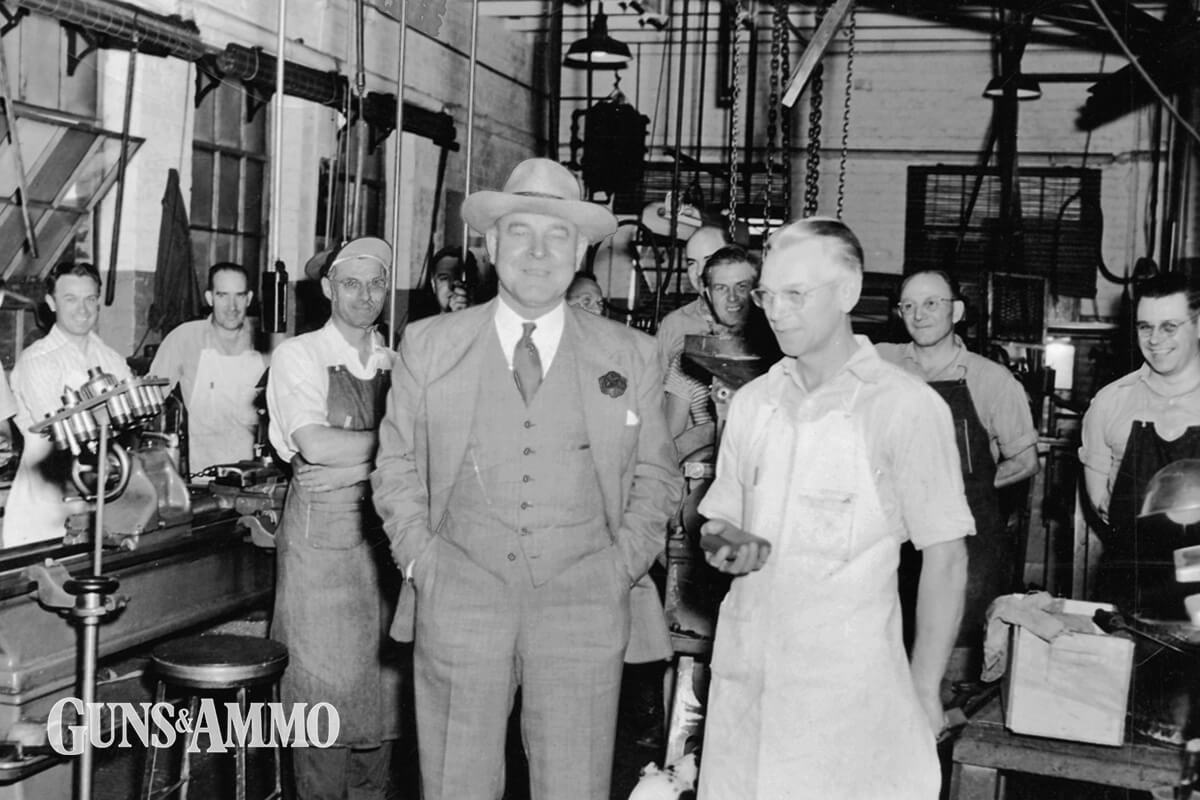
In 1922, the 34-year-old president of the American Ball Company in Minneapolis, Charles L. Horn, learned of the failing Federal Cartridge Company while seeking a new manufacturing method for steel air-rifle shot. Horn initially wanted to purchase some of Federal’s machines strictly for the manufacture of steel shot, but he was persuaded to take over the entire company. Horn’s first order of business was to hire back former Federal plant manager John W. Haller. On April 27, 1922, the fate of Federal Cartridge Company lay in the hands of its new owner, Charles Horn.
Horn knew little about the manufacture of ammunition. Internal company notes indicate that, in an effort to help keep costs down, Horn worked in the plant on occasion, but that his efforts resulted in broken belts, burned-out machines, motors and ruined ammunition components. He was subsequently asked by his employees to refrain from helping with day-to-day operations. Still, Horn was a brilliant and determined businessman. Older and better-established shotshell manufacturers controlled trade channels, which cut Federal off from potential customers. To fight this, Horn began selling Federal shotshells to gas stations, barber shops, and local hardware stores. The business model worked, and it provided Federal with the capital to survive and enough to expand operations in Anoka.
In 1924, the company began producing rimfire ammunition. R.B. Ehlen, who began working at the company shortly after it was incorporated in 1922, was chosen to oversee rimfire production.
Franklin W. Olin, the founder of the Western Cartridge Company, joined Horn as one of two primary stockholders in Federal Cartridge Company in 1925. In 1931, Olin also purchased Winchester Repeating Arms, and by 1932 Olin was the primary stockholder at the company. If you’re surprised to learn that Olin, who owned a competing cartridge company, was the principal stockholder at Federal you aren’t alone! While Horn had become the recognizable face of Federal Cartridge during the company’s formative years, Olin avoided the spotlight. Even many Federal employees had no idea that Olin owned the company. In 1938, principal ownership of Federal was transferred to the F. W. Olin Foundation, a charity Franklin W. Olin founded to handle his charitable donations (such as construction of the chemical engineering building at Cornell University, Olin’s alma mater). The F.W. Olin Foundation owned the Federal Cartridge Company for more than 40 years.
Prospects for the Federal Cartridge Company in the early 1920s looked up, and by the end of the decade the company was thriving under Horn’s leadership. His sales tactics made Federal a formidable competitor for the larger ammunition brands. The number of full-time employees rose from just seven in 1922 to around 500 in 1930, and Horn reinvested new capital into creating more buildings and buying equipment.
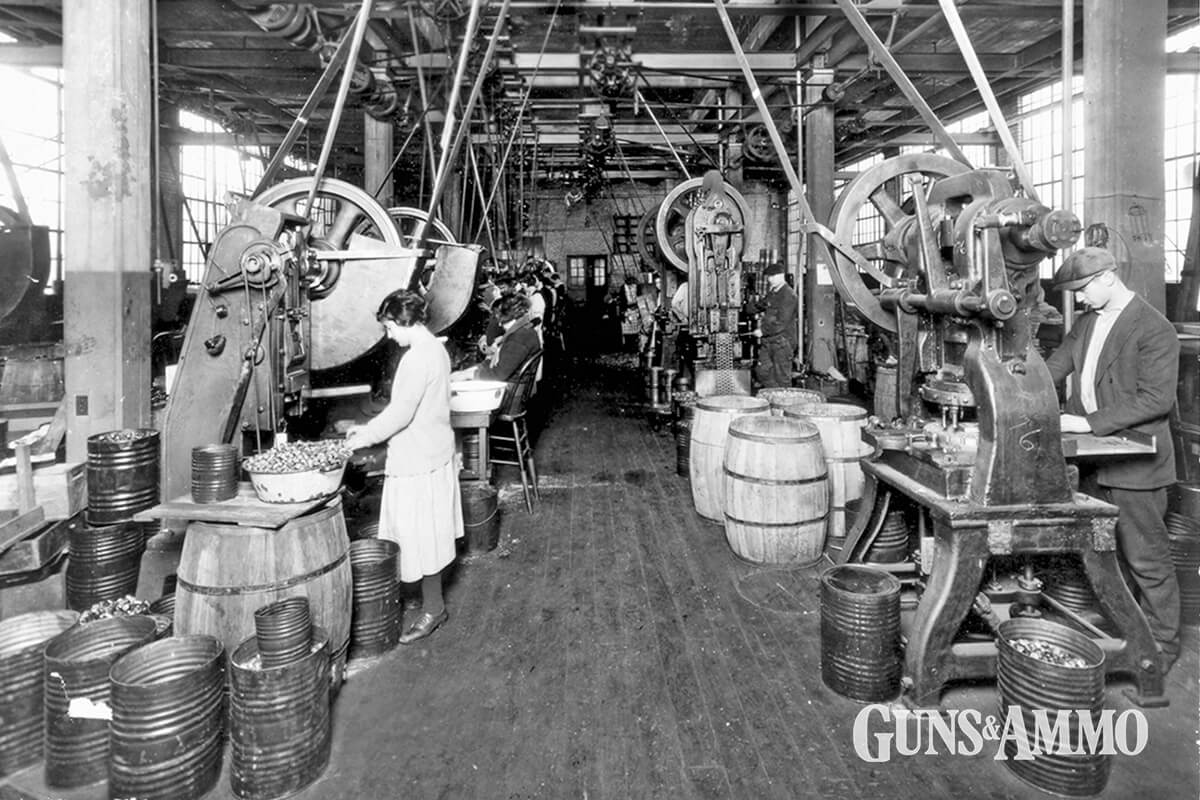
Perhaps Horn’s greatest achievement, though, was obtaining an $87 million contract from the federal government in 1941 to build the Twin Cities Ordnance Plant (TCOP) in New Brighton, just 10 miles from Anoka. When the United States officially entered World War II, production of sporting shotshells in Anoka was suspended so that the company could focus on manufacturing mortar ignition shells and .22 rimfire and skeet shotgun shells for the military. Sixty-five of the Anoka employees traveled to Frankford Arsenal in Philadelphia to complete an intensive course on centerfire rifle cartridge manufacturing so that the TCOP, or the “Arsenal” as it was locally known, could begin the manufacturing .30- and .50-caliber small arms ammunition. By 1943, TCOP employed some 25,000 people.
In 1945, after the government contract was terminated with Federal, TCOP was deactivated. But the events of the previous four years forever changed Federal Cartridge Company. Horn and Ehlen had witnessed first-hand what was required to produce massive quantities of ammunition. The original contract had called for TCOP to produce 100 million rounds, but by the end of the war it had achieved making more than 5 billion rounds. Federal also had 65 employees that were trained to oversee production of centerfire rifle cartridges. The company that was once too small to compete with larger manufacturers now had overflowing coffers and the respect of the American government.
Horn made the most of this opportunity. In 1950, TCOP was reactivated by the government to produce ammunition for the Korean War. A year later, Federal began production of centerfire primers for handloaders. In 1957, TCOP was deactivated again, but by that time Horn and Federal were well-established and production in the Anoka plant was increasing rapidly.
In 1963, Federal used the knowledge, equipment and capital acquired during World War II and the Korean War to begin producing centerfire handgun and rifle ammunition. One of the first handgun rounds ever produced in Anoka was Federal’s Monark .38 Special police round, which marked the beginning of Federal’s long relationship with the law enforcement community.
In 1965, TCOP was reopened to supply munitions for the Vietnam War, but by that time Federal was a familiar name to most hunters, shooters and law enforcement professionals. That same year, Federal began manufacturing plastic shotshell cases, and the company became the first to color code shotshells of different gauges to help prevent accidents: Red for 12 gauge; purple for 16 gauge, yellow for 20 gauge. That year’s product catalog also offered the company’s Champion Target shotshells with polymer wads, an industry first, which Federal called the “Pellet Protector Wad Column.” These plastic wads, the catalog suggested, “gives effective gas sealing, greater cushioning, and reduces pellet deformation among outside pellets which would normally rub on the barrel.” Federal backed up its claims with the use of high-speed cameras. Polymer wads eventually became commonplace in shotshells, but it was Federal that first introduced the technology.
Its commitment to competitive excellence made Federal ammunition a favorite of competition shooters. It also paved the way for new developments that would lead to Olympic gold.
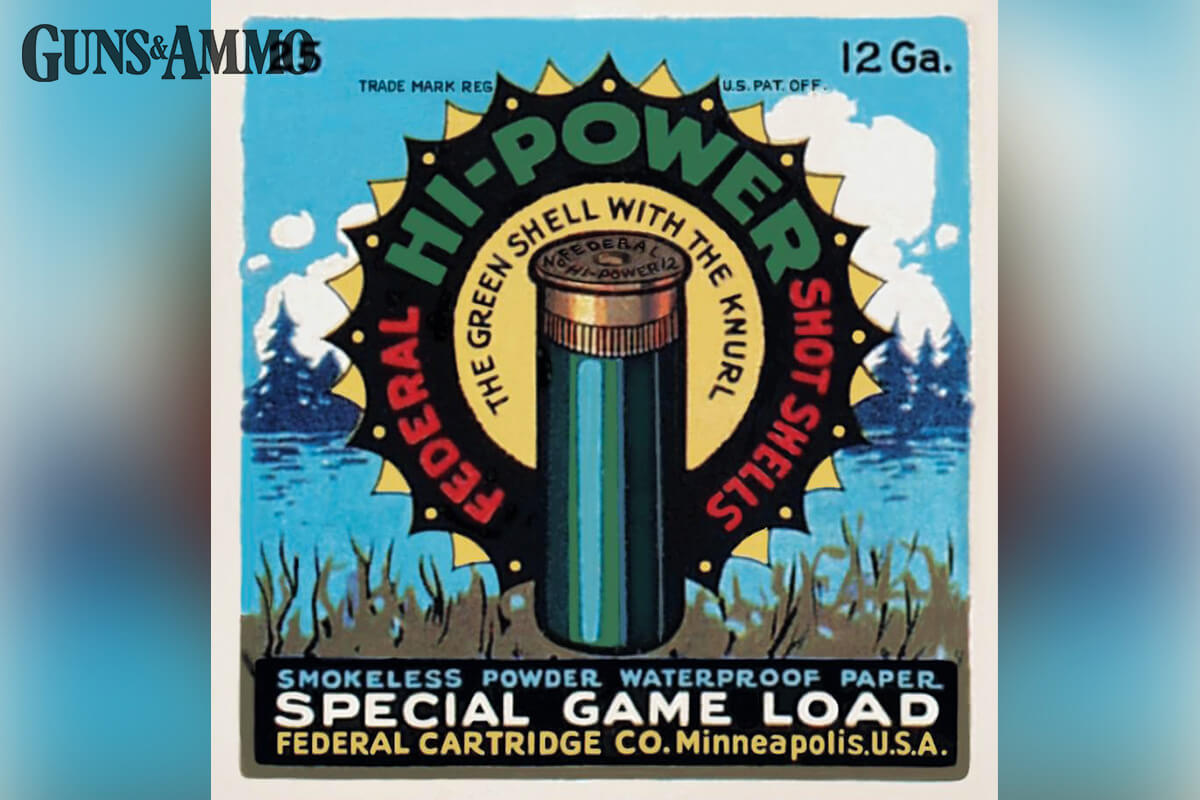
1970 to 1985: Major Moves
Several major changes happened at Federal Cartridge Corporation in the 1970s. The most important was Horn stepping down from the position of company president in 1974. Horn held that title for an unbelievable 49 years! He wouldn’t leave the company, though. He assumed the role of chairman of the board that same year, and his son William, who had served as vice president of marketing, assumed the role of president after his father stepped down. R.B. Ehlen, who had worked alongside Horn almost since the company was founded, became vice-chairman of the board.
Shortly after William Horn assumed the position of president, he was approached by a trio of businessmen from California who proposed that Federal build a clay target factory in Indiana. Federal ammunition was already a fixture at the Grand American trap shoot held in nearby Vandalia, Ohio, and the target company’s location made it easy to obtain the raw materials needed to make clay targets, namely petroleum pitch and limestone. Horn and his team purchased the company, which would become known as Champion Target, but Horn’s interest was less in clay target production and more with the men from California’s previous experience with injection molding. Injection molding was becoming more profitable, and Horn correctly believed that having the ability to injection mold products such as wads and packaging components would serve Federal well into the future.
In the mid-1970s, Federal was also experimenting with an entirely new product category: steel shot for shotguns. The effects of lead shot on waterfowl and other wetland species were being made public at the time, and there was growing sentiment against the use of lead shot for waterfowl hunting. Even though a lead shot ban was still almost two decades away, Charles Horn and his team of engineers at Federal were already planning ahead for the eventuality that legislative changes would ban its use. In 1973, Federal released its first steel shot load.
Horn’s foresight regarding the lead shot ban came as little surprise to those who knew him because he was one of the pioneers of promoting hunter-led conservation initiatives. Horn served as chairman of the Minnesota Conservation Committee starting in 1933, and he had served on the Minnesota Water Resources Board since 1955. In the 1930s, Federal used paid advertising space in national publications to persuade hunters to act principally as conservationists, and many of the attitudes that have been passed down through generations of sporting families may have originated from Federal’s early conservation advertisements. Most of these conservation advertisements used cartoons. Some of the lessons, such as respecting the landowner’s property and shooting no more than a legal limit of game, are familiar to most hunters. Federal also came out strongly against releasing housecats into the wild to protect small game and bird populations, and it advocated feeding birds in winter. In the 1940s, Olin companies Winchester-Western and Federal Cartridge Company cooperated in the distribution of a 53-page booklet titled, “Upland Game Propagation.”
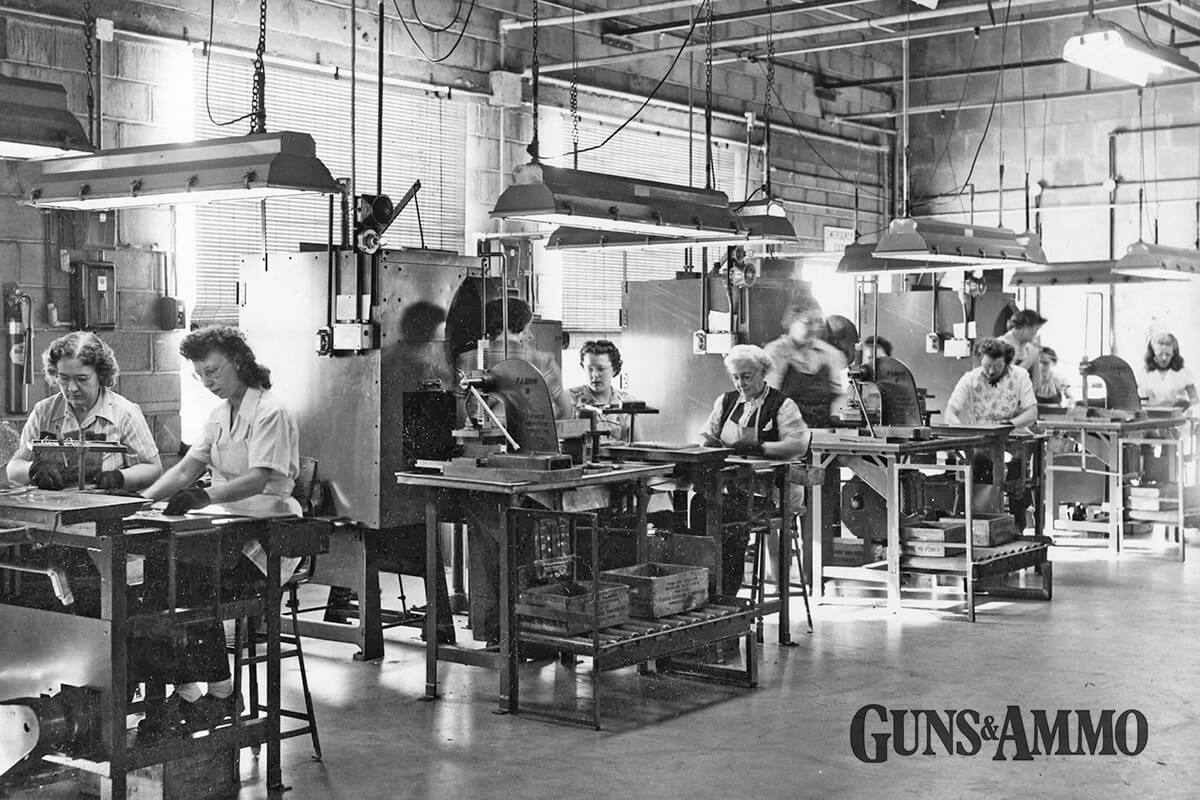
In 1977, after 55 years with the company, Charles Horn stepped away from Federal Cartridge Company for the last time at the age of 90. Horn was described as a man “of the highest caliber” by a colleague. From the early days after purchasing a failing company — and almost doomed the brand for good by breaking machines while trying to lend a helping hand in the factory — Horn, a man who was instantly recognizable by his trademark waxed mustache and white carnation, led the brand through both lean and healthy times. A few months after retiring from his position as chairman of the board, Horn passed away. R.B. Ehlen took over the role of board chairman, and William B. Horn, Charles’ son, became president and remained president until December 6th, 1985.
A tax reform law passed in 1969 that demanded that charitable foundations sell majority stock of any company they owned within 20 years, and that meant The Olin Foundation had to divest itself of Federal. In 1985, ownership of the company was transferred to Federal-Hoffman, Incorporated and the company named was changed to Federal Cartridge Company. At the time of the sale, Federal employed 2,900 people and was earning $200 million annually. That was a sea change from 60 years earlier when the company employed just seven people and barely made sufficient profits to remain in operation.
Another dramatic change to the Federal company landscape was in 1985 when David Lentz was named Federal’s the third president. It was the first time that a member of the Horn family hadn’t held an executive position at the company since it was founded in 1922.

The New Face of Federal
The late 1970s and ’80s were a period of rapid expansion and innovation at Federal. In 1977, the Federal Premium category of ammunition was established. This new concept used the highest quality materials and non-proprietary custom bullets from makers such as Sierra and Nosler, which were components formerly only utilized by handloaders. As a result, the Premium Ammunition category brought handloader-level accuracy and performance to everyone. Each item in the Premium line is built with the finest components and held to the tightest quality standards. Today, the Federal Premium lineup — which not only includes centerfire rifle, but also handgun, shotshell, muzzleloader and reloading components — still dominates the company’s product catalog.
In 1978, the company began supplying the FBI with their .308 Winchester load. In 1980, they supplied the same ammunition to the U.S. Secret Service. In 1982, Federal purchased the manufacturing rights to Nyclad bullets from Smith & Wesson, which were popular with law enforcement agencies. And though ’80s, Federal developed stronger relationships with the nation’s law enforcement agencies as more officers began carrying firearms loaded with Federal ammunition. The biggest LE development of the decade for Federal was the release of the company’s Hydra-Shok bullet in 1989. The infamous 1986 Miami Shootout had prompted the FBI to begin closely examining the ammunition they supplied to their agents, and Hydra-Shok bullets were an early standout in FBI protocol testing. A combination of a jacketed hollow point (JHP) design with an internal post positioned within the nose cavity of the bullet allowed Hydra-Shok bullets to perform much better in barrier tests. They were far more advanced than the lead Monark bullets that had been popular with law enforcement professionals in the 1960s, and police agencies across the country adopted Hydra-Shok as their standard duty ammunition.
The 1980s also saw Federal increasing their investment in the nation’s conservation organizations. In 1984, Federal was one of the inaugural sponsors of Pheasants Forever, and that same year Federal also began sponsoring the National Wild Turkey Federation. A year later, Safari Club International, the Ruffed Grouse Society, and NRA’s Youth Hunter Education Challenge were all added to the organizations that Federal supported financially. In 1987, Federal began sponsoring Ducks Unlimited, and in 1988 The Rocky Mountain Elk Foundation.
Three years after the buyout from Olin, Federal was sold again, this time to Pentair Incorporated, and in 1988 Ron Mason was named the fourth president of Federal.
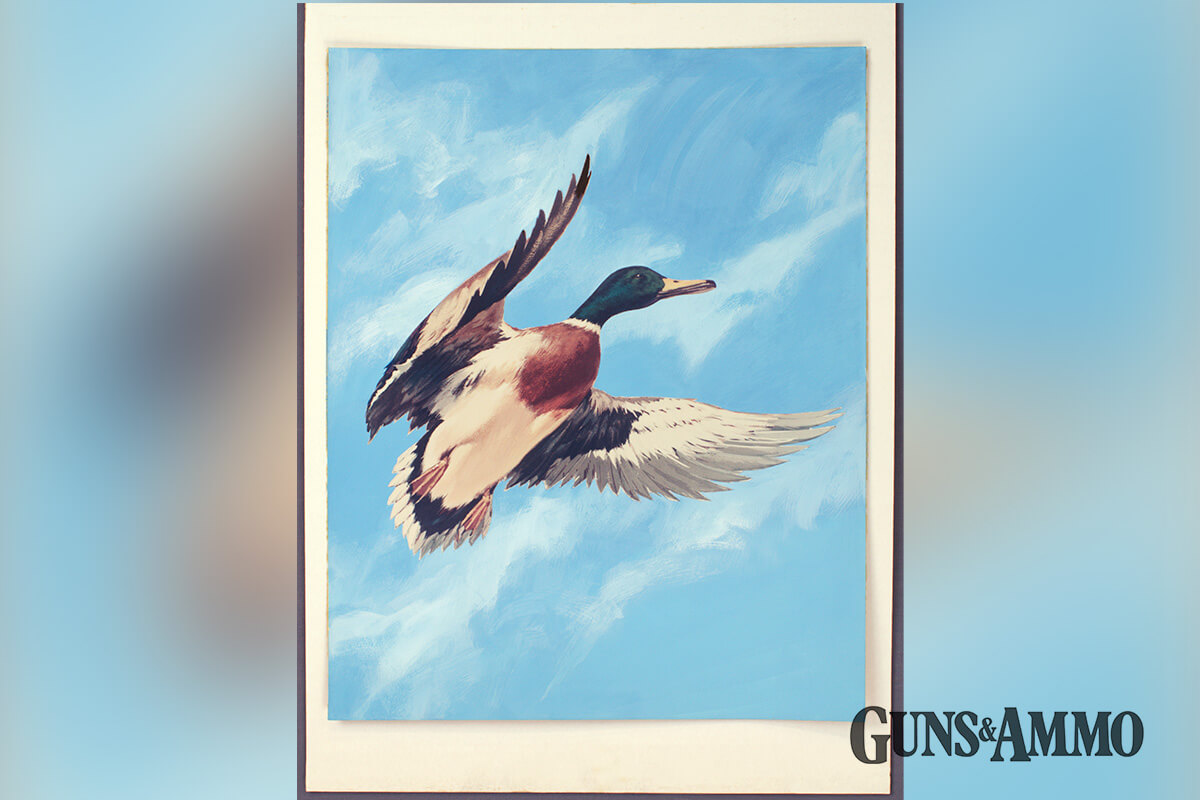
The World Stage
“One of the first questions I had was, ‘How are we going to compete?’” Mason said in a 1997 interview with “Shooting Times” magazine. “I realized we weren’t as rich in history as Remington or Winchester. The West had already been won. Federal didn’t have that type of tradition. We decided to focus on product technology.”
Mason didn’t just focus on product technology, but invested in it. His goal was lofty: He wanted an Olympic shooter to win a gold medal using Federal ammunition. No shooter had earned an Olympic medal since the Rome Olympics in 1960, but Mason was determined to find a way onto the podium.
“When we went to reinvent the rimfire cartridge, we discovered 400 to 450 variables,” Mason said. The company invested more than $2 million in the rimfire project. In 1990, Federal’s Gold Medal UltraMatch .22-caliber ammunition was released.
Mason convinced the U.S. Shooting Team to use the new ammunition, and at the 1992 Olympics in Barcelona, American Launi Meili won a gold medal in the women’s smallbore three-position rifle event. With time and financial support, Federal’s engineers had managed to accomplish the unthinkable.
“The .22 effort played throughout the company,” said David Longren, Federal’s vice president of engineering in the 1990s. “It allowed us to establish a world-class design approach.”
The 1990s were an important decade for Federal. Mason continued to reinvest heavily in research and development, relying on the brightest engineers and a forward-thinking approach to ammo design to help the company compete against brands that had been established long before Federal.
“The information [obtained through rimfire development] cascaded into [other] areas,” Mason said. “It cascaded into centerfire rifle and pistol.” Part of the investment made in R&D was modern computer equipment and high-speed cameras. Investing in this technology not only streamlined the production process, but also improved precision. Federal shotshells had been a fixture at major competitive shotgun events like the Grand American since 1982, but research into shotshell design earned Federal shooters gold, silver, and bronze medals at the 1996 Atlanta Olympics (including the legendary Kim Rhode’s first win).
Changes were coming to Federal’s consumer products, as well. In 1992, the Federal ammunition lineup was divided into three categories: Federal Premium, Federal Classic, and American Eagle. Each ammunition category received its own packaging style. (Many may remember the Premium ammo line’s signature blue-and-gold boxes, and the silver-and-gold packaging of the Classic ammunition line.)
In 1991, a national ban of lead shot for waterfowl hunting came into effect, but by that time Federal was two decades into their research on steel-shot load development, and by 1996 the company had released its first tungsten load. In 1993, Federal launched the Trophy Bonded bullet, a rugged and dependable ancestor of Federal’s most successful big-game hunting bullets such as Trophy Bonded Tipped and today’s Terminal Ascent bullets. BallistiClean ammunition was developed in 1994, which met FBI and OSHA standards for indoor range use. And, in 1996, Premium High Energy centerfire ammunition was added. Throughout the decade, new Gold Medal target shotshells and rimfire loads were released in honor of Federal’s unprecedented Olympic success. Between 1990 and 1997, Federal released 300 new products. Mason estimated in 1997 that a quarter of all the company’s sales were comprised of products released since the 1992 Olympics.
Federal expanded its conservation efforts through the 1990s, also. It offered “Another Hunter For Conservation” patches for $2, money that helped support the two-dozen conservation organizations that Federal was partnered with by the end of the 1990s.
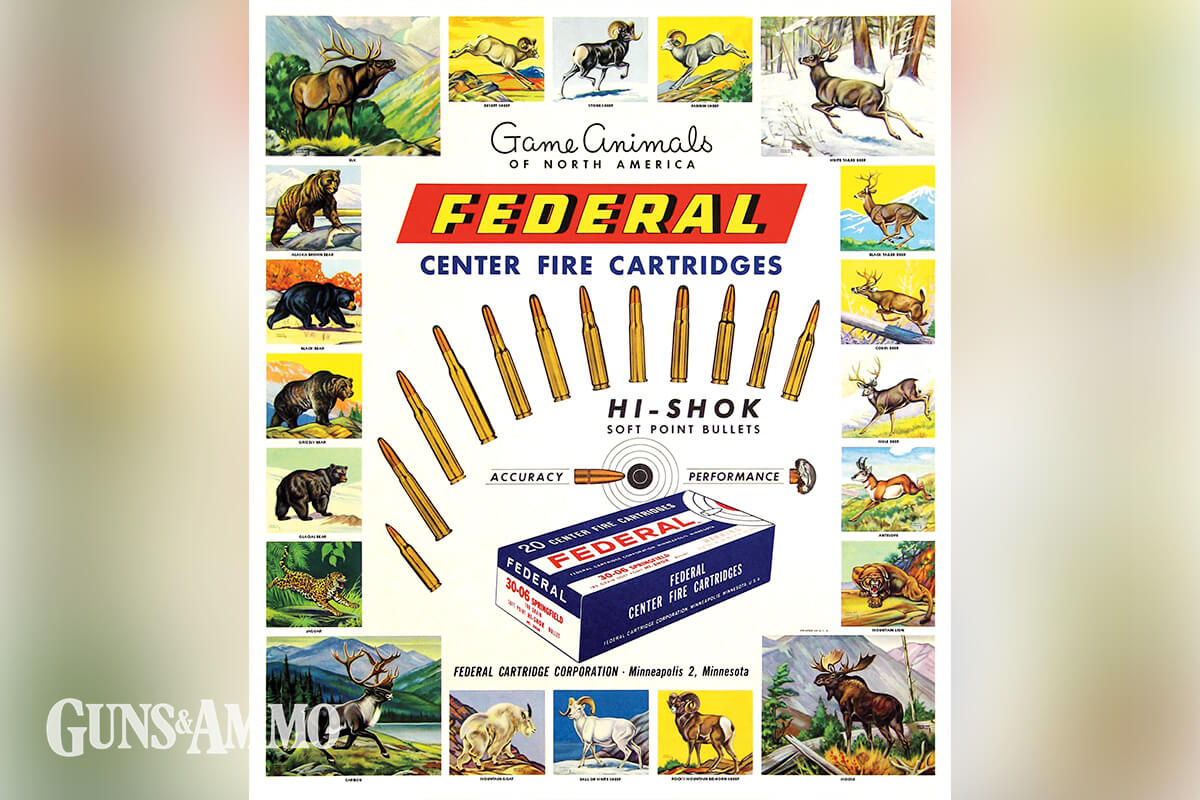
1997 Blount Industries Sale
On June 16th, 1997, Blount Industries made public their intent to purchase Federal Cartridge Company for the price of $112 million. Alabama-based Blount Industries owned several other outdoor brands including Speer, CCI, Simmons, RCBS, Weaver, Outers, and others. Once the offer was accepted, the buyout was scheduled for the third quarter of 1997. Blount’s outdoor brands showed a net profit of $147 million in 1996.
“Federal Cartridge is one of the premier brands in the shooting sports industry,” said John M. Panettiere, president and CEO of Blount Industries at the time of the sale. Gerald Bersett was named the new president of Federal, replacing Ron Mason.
Blount’s ownership of Federal was short-lived. In April 1999, when Lehmen Brothers Holdings purchased Blount’s for the price of $1.16 billion, rumors began to speculate that Lehman Brothers would sell off Blount Industries almost immediately, and that’s what happened.
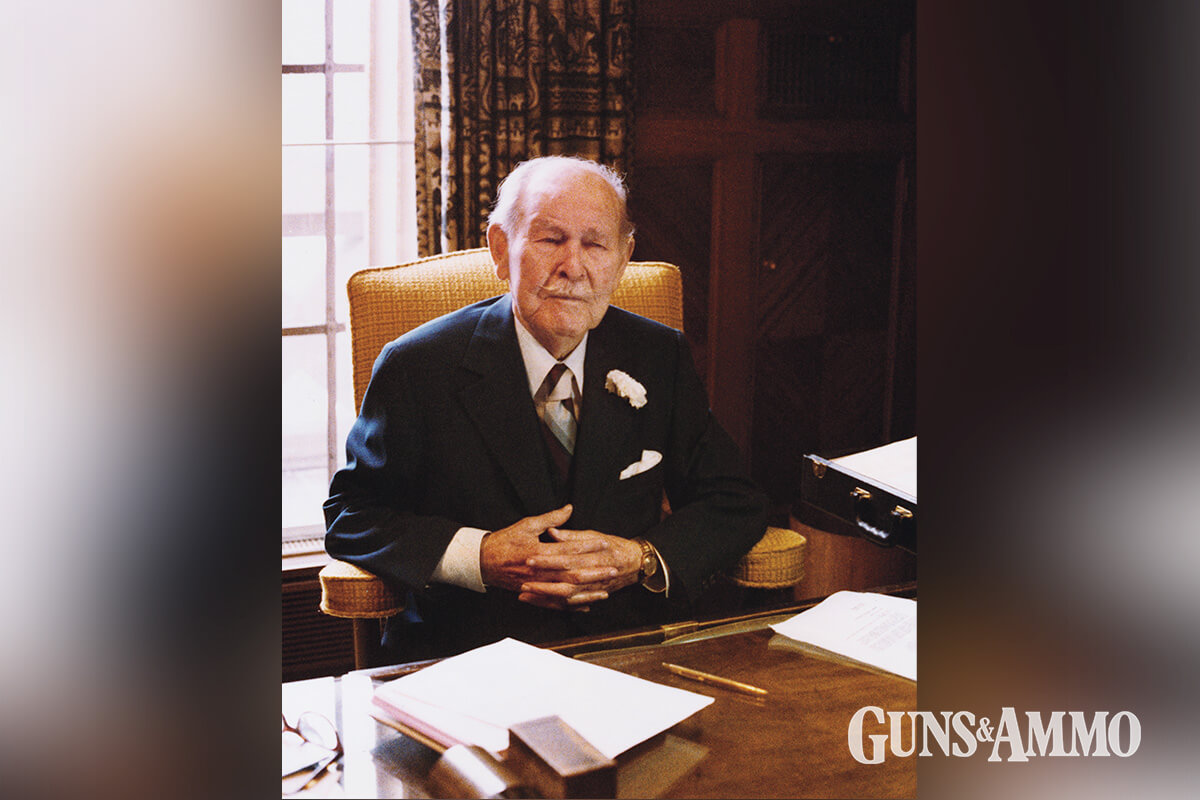
ATK Takes Over
In 2001, Lehmen Brothers announced the sale of Blount International Sporting Equipment Group on October 25, 2001. The buyer was the Edina, Minnesota-based aerospace and defense company Alliant Techsystems, or ATK. The purchase price was 2.9 million shares of ATK common stock valued at roughly $250 million. The purchase was finalized in December 2001. Ownership of Federal and the other brands under the Blount umbrella offered ATK, which employed 11,400 people at the time, an opportunity to expand its reach beyond the defense and aerospace industries. Paul David Miller, then-ATK CEO and chairman, said the purchase of Blount — and Federal in particular — “bridges ATK into the civil and law enforcement markets.”
The year following the merger brought a new look to Federal’s ammunition line. The “Shok” name was used throughout the product lines. Hence, products were labeled “Vital-Shok,” “Power-Shok,” “Cape-Shok,” and so forth, presumably to play upon the continued success of Hydra-Shok ammunition. Packaging color was changed from the traditional gold-and-blue and silver-blue to orange-and-blue. Finally, the brand name was changed to Federal Premium.
ATK didn’t merely change the company’s color scheme, though. Under guidance of Ammunition President Mark DeYoung, Federal began to roll out a number of newly-engineered products at a pace not seen since the years following the Olympic victory in Barcelona.
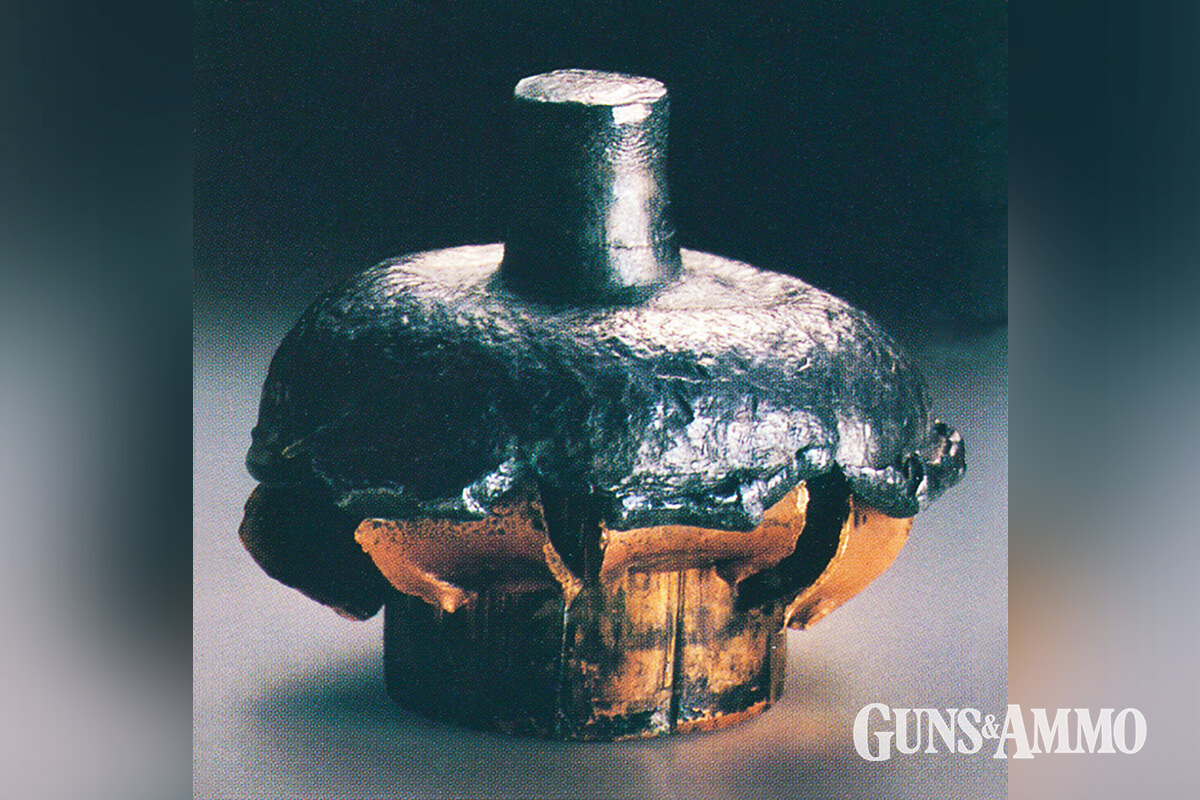
In 2005, Federal launched Fusion ammunition, which featured electrochemical bonding. Fusion bullets performed consistently on big game and proved to be an exceptional value. That was also the first year for both the FliteControl wad and Heavyweight shot, two components that would help to reshape shotshell construction. Perhaps the biggest news for Federal in 2005 was the release of its first centerfire cartridge using the company name: .338 Federal.
The .338 Federal project was a cooperative effort between Federal, who designed the cartridge, and SAKO of Finland. SAKO chambered three of its Model 85 rifles for it: 85 Gray Wolf, 85 Stainless, and 85 Hunter. Based on a necked-up .308 Winchester cartridge, the .338 Federal offered muzzle energy comparable with a 7mm Rem. Mag., but with less recoil. Since it was based on the .308, the .338 Federal fit in short-action rifles, too. Two years later, Federal launched its second cartridge: .327 Federal Magnum. That project was a joint venture with Ruger, and the .327 Federal Magnum offered handgun enthusiasts near-.357 Magnum ballistics with less recoil and room for an additional round in most .357 Magnum-sized cylinders. Revolvers in .327 Federal Magnum could also fire .32 H&R Magnum — a cartridge Federal designed in 1984 in cooperation with Harrington & Richardson — and the .32 S&W.
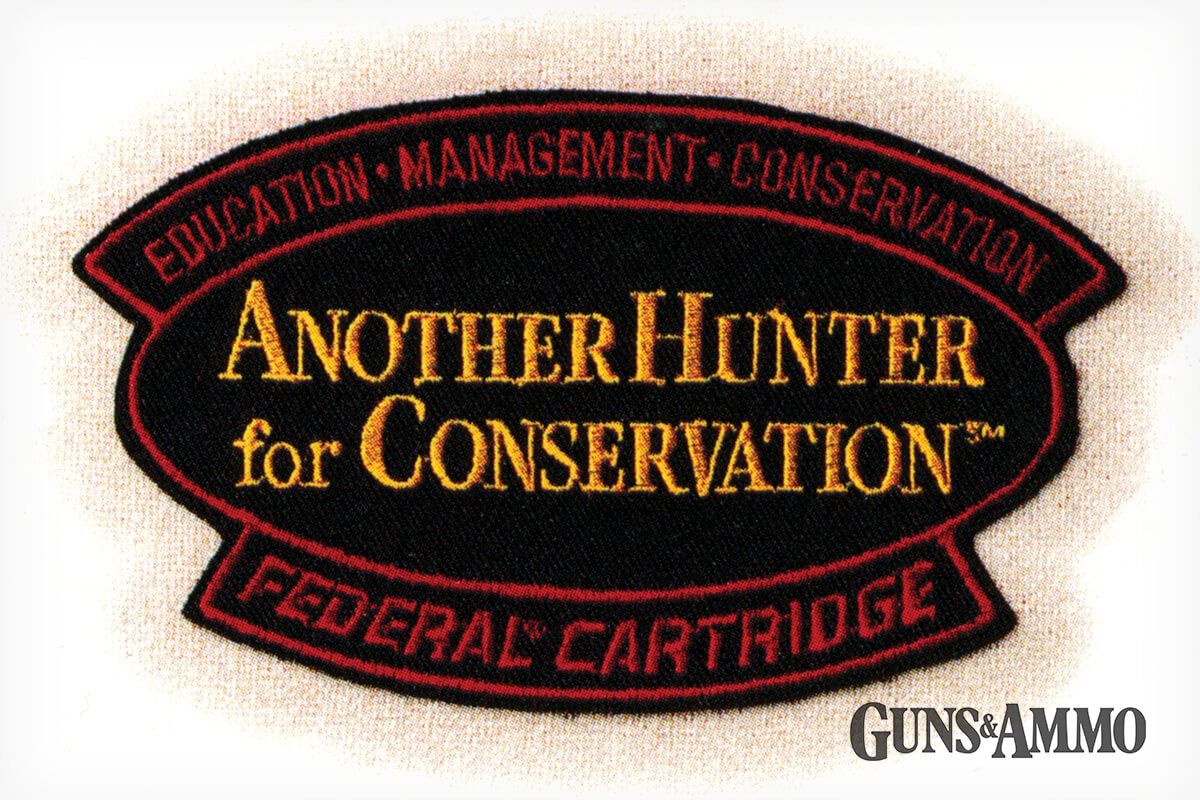
2015 to Today: Vista Takes Charge
In 2015, ATK spun their outdoor products off into an independent corporation: Vista Outdoor. Mark DeYoung became president, and Vista Outdoor was traded on the New York Stock Exchange (NYSE) under the stock symbol “VSTO.” David White was named president of the ammunition brands, which included CCI, Speer and Alliant Powder.
The chain of new products didn’t slow when Vista Outdoor emerged from ATK, and during the last five years Federal has continued to launch useful products at an unrivaled pace. Some of the earliest to emerge after Vista Outdoor was established were 3rd Degree turkey loads, Hydra-Shok Deep, Gold Medal Grand, Micro HST, and more. These were aimed at different areas within the hunting and shooting market. The Federal Ballistic App, which provided shooters and hunters with a catalog of customizable ballistic data, was also released.
In 2018, Jason Vanderbrink took over as president of all of Vista Outdoor’s ammunition brands. Vanderbrink had previously served as ATK’s director of sales and president of sales for Vista, so he was already acquainted with the ammunition market. Under Vanderbrink’s leadership, Federal has rolled out a long list of new products including FireStick — which earned Guns & Ammo’s Innovation of the Year award in 2020 — as well as the .224 Valkyrie cartridge, Syntech ammunition, Heavyweight TSS shotshells, HammerDown and Terminal Ascent centerfire ammunition. Federal also opened its Custom Shop to load ammunition to customer specifications.
“To build and market better ammunition, we need to stay obsessed with accuracy and our dedication to high standards of performance,” said Vanderbrink. “We must always be striving to maintain the most efficient manufacturing processes, cost-effective business strategies, and use of the best raw materials and components.”
In 2020 and 2021, Vista Outdoor added two more ammunition brands to its business: Remington Ammunition and Hevi-Shot. These purchases have increased Federal’s ability to meet America’s unprecedented demand for ammunition. Because Vista Outdoor has several different ammo companies in its portfolio, Federal is able to take advantage of these separate relationships and become a stronger ammunition manufacturer in the process.

That Was Then, This Is Now
From its early days as a small Minnesota ammunitions company that sold shotshells and rimfire cartridges in Midwest barber shops and gas stations, Federal has since transformed into one of the world’s largest ammunition brands.
Ron Mason said that the company didn’t have “the history” of its competitors back in 1997, but that can’t be said today. From providing munitions for America’s wars, to helping talented competitors earn a spot on the Olympic podium during the 2021 Tokyo games, Federal has accomplished feats that no other domestic manufacturer of ammunition can claim.
The Federal brand continues to provide the ammunition that we all use to hunt for food, compete in tournaments, to defend ourselves and a nation. It’s on us to introduce the next generation of hunters and shooters to these passions. It’s no longer correct to say that Federal doesn’t have a history that matches other ammo brands. Federal has a hundred years of stories that can be told from all parts of America. Federal continues a commitment toward innovation as it enters its second century in business.
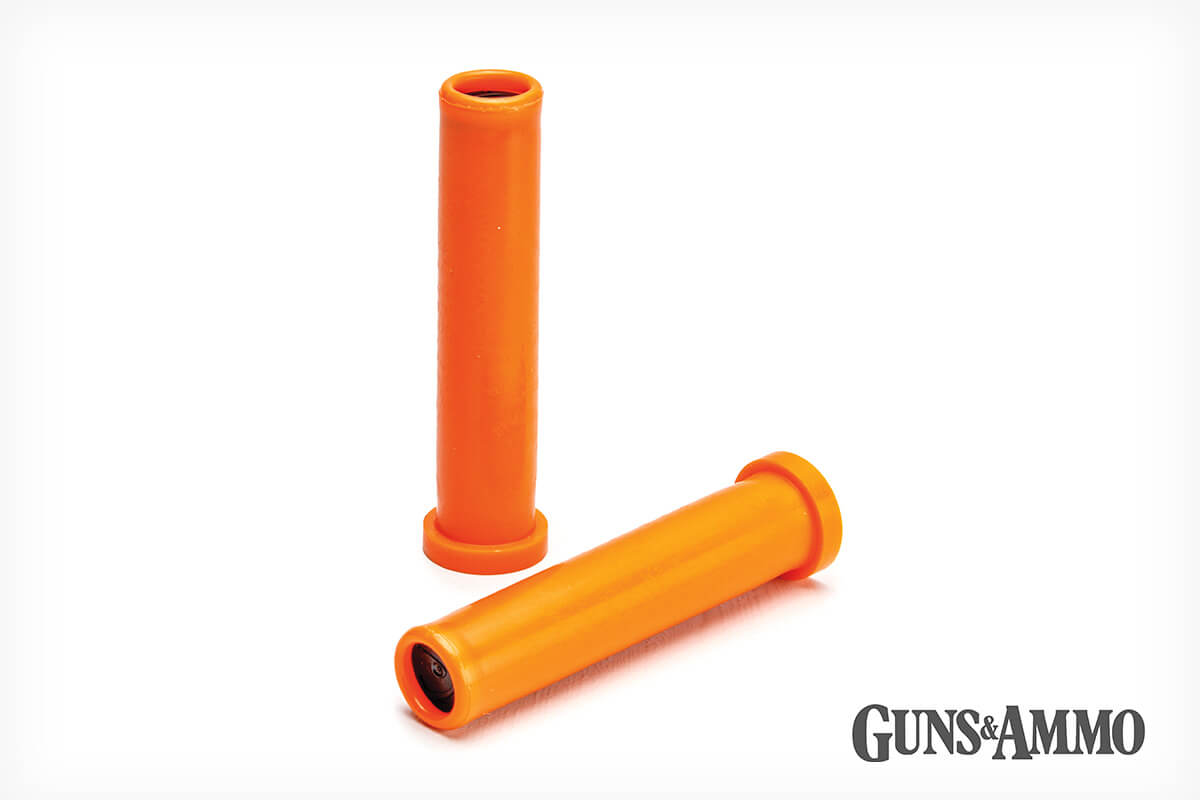
Leave a Reply
You must be logged in to post a comment.